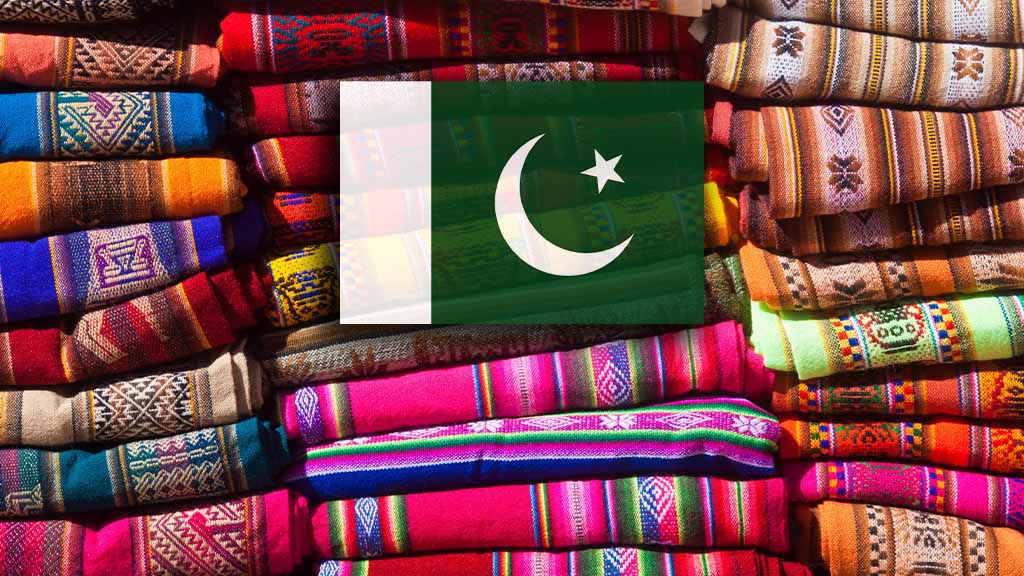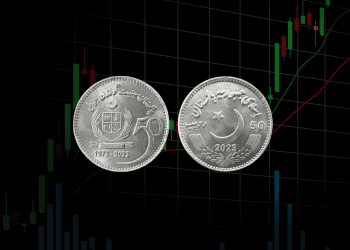Pakistan’s textile and clothing sector recorded an impressive growth of 9.51% during the first quarter of FY25, despite concerns over a potential industry slump, according to data released by the Pakistan Bureau of Statistics (PBS) on Thursday. The sector, which had faced a decline in previous months, rebounded strongly, signaling resilience amidst various economic challenges.
The data revealed that textile and clothing exports surged to $4.52 billion in the July-September period of FY25, compared to $4.13 billion in the same period last year. This marked a significant recovery, particularly after the sector saw a 3.09% decline in July, followed by a strong 13% growth in August and a 17.92% increase in September.
Despite this positive performance, experts warn that the textile sector may continue to face challenges competing with regional competitors due to newly introduced tax measures. The government’s decision to increase tax rates on exporters’ personal income in the 2024-25 fiscal year could weigh on the sector’s future growth. However, the disruption of supply from Bangladesh has increased the demand for Pakistani garments, providing some relief to the industry.
The textile sector, which boasts an installed capacity of $25 billion, has experienced stagnant exports over the past two years. Industry insiders attribute this stagnation to persistent structural issues that have hindered growth, despite the sector’s potential.
KEY EXPORT PERFORMANCE HIGHLIGHTS
- Readymade Garments: Exports surged 23.17% in value and 16.16% in quantity during the first quarter.
- Knitwear: Posted a 14.13% rise in value and 2.17% in quantity.
- Bedwear: Experienced 13.31% growth in value and a 14.55% increase in quantity.
- Towels: Saw a rise of 7.04% in value and 5.32% in quantity.
- Cotton Cloth: Recorded a 10.20% increase in value and 3.43% in quantity.
Despite these gains, some subsectors saw a decline. Yarn exports dropped by a significant 48.45% during the first quarter compared to the same period last year. However, the exports of made-up articles (excluding towels) increased by 12.10%, while tents, canvas, and tarpaulins grew by 5.43%.
RAW MATERIAL IMPORTS AND OTHER TRENDS
On the import front, the first quarter of FY25 saw raw cotton imports surge by 21.17%, reflecting the industry’s reliance on imported raw materials to meet production demands. Additionally, the import of second-hand clothes rose by 23.35% during the same period.
However, the import of synthetic fiber and synthetic/artificial silk yarn posted negative growths of 19.65% and 5%, respectively. Other textile-related items saw a sharp increase, with imports rising by 66.51% during the review period.
TOTAL EXPORTS AND BROADER IMPACT
Overall, Pakistan’s total exports in the first quarter of FY25 grew by 14.61%, amounting to $7.90 billion, compared to $6.90 billion in the same period last year. The robust performance of the textile and clothing sector has played a crucial role in bolstering the country’s export profile, but industry experts stress that long-term growth will depend on addressing the structural issues and navigating the challenges posed by taxation and competition.
As the fiscal year progresses, it will be essential to monitor the sector’s ability to sustain growth and adapt to both domestic economic policies and global market dynamics.
IMF URGES PAKISTAN TO END PREFERENTIAL POLICIES FOR AGRICULTURE AND TEXTILE SECTORS TO UNLOCK GROWTH POTENTIAL
In a critical assessment of Pakistan’s economic policies, the International Monetary Fund (IMF) has called for the swift removal of preferential treatment, tax exemptions, and other protections granted to the agriculture and textile sectors. In a report accompanying the recently approved $7 billion Extended Fund Facility (EFF), the IMF stated that these sectors have long impeded the country’s economic growth, consuming significant public resources while remaining inefficient and uncompetitive.
The IMF’s report highlights the urgent need for Pakistan to shift from economic practices that have dominated its 75-year history in order to escape recurrent boom-bust cycles. It criticized the agriculture and textile sectors for not contributing sufficiently to national revenue, while absorbing a disproportionate share of public funds. The report emphasized that Pakistan’s persistent economic stagnation has pushed more than 40.5% of the population below the poverty line, making comprehensive reforms essential for growth.
SECTOR-SPECIFIC CONCERNS
The report pointed out that while the agriculture and textile sectors dominate Pakistan’s export basket, they have failed to contribute to a more diversified and complex economy. The country ranks 85th on the Economic Complexity Index, a position unchanged since 2000. With the majority of exports concentrated in low-value products like cotton yarn, rice, and woven fabrics, Pakistan has struggled to shift towards higher-value and more technologically advanced goods.
The textile sector, in particular, has been highlighted as a major concern. The IMF noted that between 2007 and 2022, this sector benefited from significant subsidies, preferential pricing on raw inputs, concessional financing schemes, and favorable tax policies. As of May 2024, 70% of concessional loans from the central bank were tied to the textile sector, raising concerns about inefficiencies and resource misallocation.
The IMF argued that government interventions, such as price controls and subsidies, have distorted the market, discouraging innovation and hindering the development of more sophisticated export goods. It urged Pakistan to discontinue these practices to avoid further inefficiency and to better integrate into global value chains.
NEED FOR POLICY OVERHAUL
To reverse these trends, the IMF recommends that Pakistan simplify its trade policies as part of the upcoming National Tariff Policy (2025-29). The report advises against using tariffs to promote industrialization or protect inefficient sectors, as these measures weaken export competitiveness and encourage rent-seeking behaviors. Instead, the IMF advocates for greater openness to imports, which can stimulate domestic competition and drive innovation.
The report also calls for an end to export subsidies and local content requirements, as these policies promote the misallocation of resources and may violate international trade obligations. Instead, Pakistan should focus on developing a competitive, technologically advanced economy, where industries are allowed to flourish without government interference.
STUNTED EXPORT GROWTH AND GLOBAL INTEGRATION
Compared to its regional peers, Pakistan’s export growth has lagged significantly, particularly throughout the 2010s. The country’s restrictive trade policies, including tariffs, non-tariff barriers, and exchange controls, have further isolated it from global markets. The IMF noted that Pakistan consistently ranks in the 90th percentile of the Measurement of Aggregate Trade Restrictions Index, signaling that its economic policies remain highly protectionist.
The IMF stressed that a shift towards fundamentals-driven competitiveness, rather than policy-induced distortions, would be key to unlocking Pakistan’s economic potential. Greater integration into global trade, easier access to imports for production, and the removal of fiscal incentives would allow for a more efficient allocation of resources, creating room for innovation and technological development.
AGRICULTURE SECTOR CHALLENGES
The IMF report also sheds light on Pakistan’s agriculture sector, which has been a major barrier to the country’s economic transformation. The sector, plagued by low labor productivity, has seen minimal reallocation of resources compared to peer nations. Government policies, such as support prices and tax incentives, have trapped resources in agriculture at the expense of more productive sectors, preventing the country from transitioning towards higher-value industries.
The IMF argues that to facilitate the development of new, high-potential industries—such as chemicals, industrial fabrics, and cosmetics—Pakistan must create a level playing field for all businesses. This would include reducing distortions in resource allocation and fostering a competitive environment that rewards innovation and productivity.
PATH FORWARD
In conclusion, the IMF report paints a stark picture of Pakistan’s economic challenges but offers a clear path forward. By ending preferential treatment for agriculture and textiles, simplifying trade policies, and fostering greater integration into global markets, Pakistan can break free from its cycle of stagnation. These reforms, coupled with a focus on more sophisticated exports, could lead to sustainable economic growth and improved living standards for the country’s population.
As Pakistan navigates its economic future, the recommendations outlined in the IMF report will be critical for fostering a more competitive, resilient, and technologically advanced economy.
















